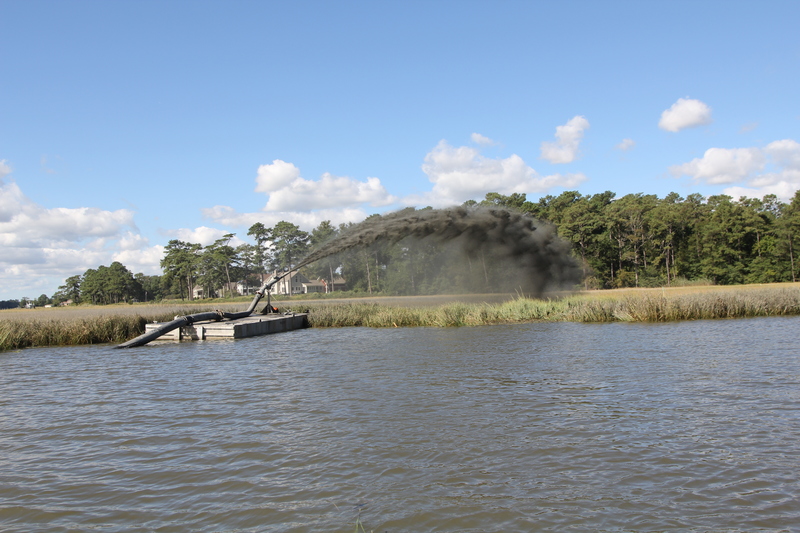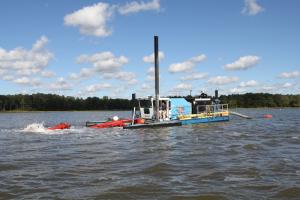State environmentalists are putting a twist on recycling. A new program returns material dredged from the Inland Bays back to the marshland it came from.
“We want to target areas where they are dredging and there is a need for marsh replenishment,” said Alison Rogerson, an environmental scientists with Department of Natural Resouces and Environmental Control.
DNREC and Center for the Inland Bays employees together developed a plan to use DNREC's dredging equipment to rebuild marshland washed away by rising tides. As a test, instead of dredging the Inland Bays and placing all the spoils on a landfill, the groups developed a plan to spray 10 percent of dredged materials onto sinking marshland. The rest is water.
It took some tweaking of existing equipment, but in February the groups gave the improvised technology a try, spraying about five acres of Pepper Creek marshland.
“We think it's been a success. There's been good regrowth of the marsh grass in the areas that we've sprayed,” Rogerson said.
Spraying stopped over the summer months so as not to interfere with the fishing season or nesting birds or other wildlife, Rogerson said.
Dredging in the area of Pepper and Vine creeks resumed about a week ago and will continue over the next three months. Sally Boswell, education and outreach coordinator for CIB, said restarting the dredging project has coincided with Sea Level Rise Awareness Week.
Two dredging boats suck out sludge from the bottom of the channel and dispose of the spoils. One uses a long line to deposit the sludge onto a patch of nearby land, while the other sprays a 30- to 40-foot arch of water and sludge onto the marsh. Only windy weather prevents spraying. Otherwise, Wilson said, the equipment will operate 10 hours a day, four days a week through the end of December.
“Mud is flowing through the marsh, and that's what we want,” said Bart Wilson, science coordinator for the Center for the Inland Bays.
A $70,000 EPA grant helped fund the project, but Rogerson said expenses have been minimal; only half the grant has been spent so far. She said fuel, hay bales to stabilize sludge in some areas and the cost of moving the equipment have been the major costs so far.
Rogerson said officials researched marsh replenishment projects in Louisiana and Texas before embarking on the current undertaking. DNREC officials also made sure there are no metals or polycarbons in the sludge that is sprayed onto the marsh.
“Tides are coming in higher and higher, and this marsh will be behind the game,” Rogerson said of the need to rebuild the marshland.
Based on the success of the Pepper Creek dredging, a similar project in Indian River is in the works for next year, Rogerson said.
DNREC scientists are targeting marshland near the Indian River dam where Route 24 crosses the river. The sinking marshland is close to DNREC's next dredging project, and would benefit from spray replenishment, she said.
Besides marshland replenishment, Rogerson said, scientists are considering using the spray process to recreate marshes that have washed away. Photos of marshland taken years ago would be compared to recent photos to determine areas that no longer exist, she said.
Scientists are keeping records of the marsh replenishment program, and intend to write a guidebook for others who may be interested in the process, Rogerson said. They may present their findings at future conferences as well, she said.
“In the future, it would be nice to say we will reuse 100 percent of the dredging material,” Wilson said.
Melissa Steele is a staff writer covering the state Legislature, government and police. Her newspaper career spans more than 30 years and includes working for the Delaware State News, Burlington County Times, The News Journal, Dover Post and Milford Beacon before coming to the Cape Gazette in 2012. Her work has received numerous awards, most notably a Pulitzer Prize-adjudicated investigative piece, and a runner-up for the MDDC James S. Keat Freedom of Information Award.






















































